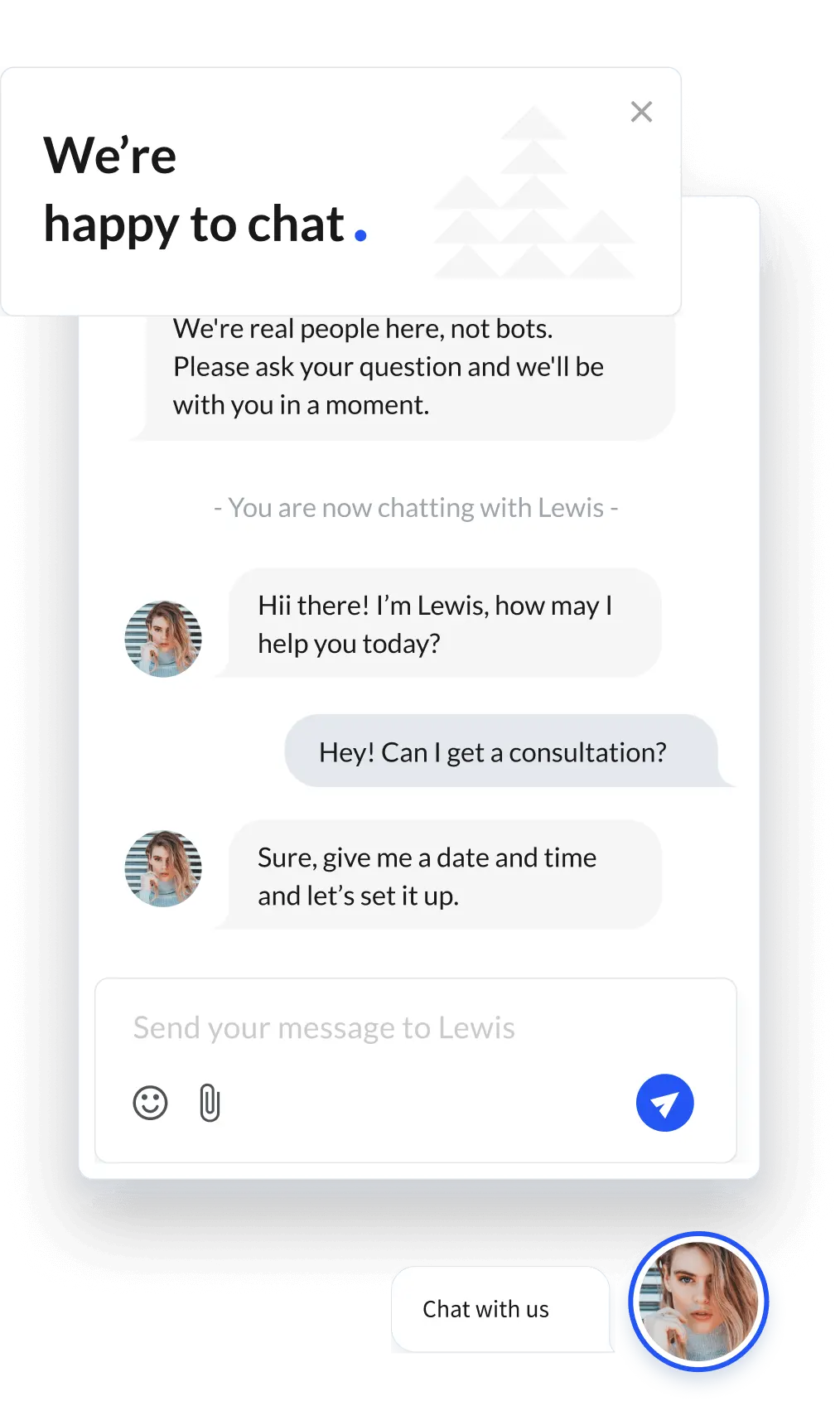Lead Response Time – What It Is & Why This Can Make or Break Your Business
Team ChatSupport
August 31, 2022

What is lead response time?
Lead response time is the average time that sales teams take to follow up with a prospect after an initial conversation or expression of interest.

Let’s say you are a customer who just submitted a form on a website’s landing page. How long will it take for a sales rep to reach back out to you regarding your interest? How long are you willing to wait after you’ve made that first contact?
Well, if you’re like 94% of surveyed shoppers, you want a response within 24 hours.
As we sometimes know, though, that’s not always the case.
Average lead response time
It’s reported that the average response time for a sales lead is actually 47 hours. Off the bat, we know that this is much too long, and businesses who go by this standard run the risk of losing sales left and right.
In fact, this Harvard Business Review study that involved 1.25 million sales leads received by 29 B2C and 13 B2B companies reveals that companies that contact prospects back within one hour of receiving a query is seven times more likey to close a sale.
Needless to say, a short lead response time is critical.
In this article, we will learn how to calculate your business’s average lead response time as well as cover a few ways to reduce it.
How to calculate lead response time
Here is just one example of how you can calculate your average lead response time:
- Take the total amount of time between lead reception and first response, and divide that number by the total number of leads responded to.
So let’s say your business receives a total of three leads that you respond to.
You respond to Lead #1 in 4 minutes, Lead #2 in 6 minutes, and Lead #3 in 10 minutes.
Add 4+6+10 to get a total of 20 minutes.
Then, divide that number by the 3 leads.
20 minutes/3 leads = 6.6 minutes would your average response time.
Why is lead response time important?

It’s simple. Fast response times help businesses close deals. What good is a pipeline of prospects if you fail to respond to them in a timely fashion?
Quick replies to your customer queries are vital to improving your business’s chances of landing the sale. By taking an inordinate amount of time to respond, you run the risk of sending your prospects straight to your competition.
Here are just a few other reasons why it’s so important to have a short lead response time:
Valuable company resources are spent on outbound lead generation
Your business is probably already spending a lot of money and manpower to generate quality leads. It’s trying new marketing strategies, customer acquisition tactics, staffing call center agents, and may even be spending precious funds on purchasing leads.
If this is the case, it’s imperative that you make every effort count. You don’t want to spend all these resources into gaining leads, only to lose them when it matters.
Improves the customer journey

Can you think of a time when you’ve waited longer than several days to hear back from a business? Did you become frustrated enough to abandon the business? Perhaps even resorted to a competitor?
This is something all businesses should avoid. By getting back to your prospective customers in a timely manner, you make a positive impact on their customer journey and experience! You show your customers you care about their time, and that you’re willing to prioritize their needs ahead of your convenience.
Leads may lost interest
Put simply, if customers sense that they are being ignored or that you’re too bust, they will find alternatives and seek competitors. At the end of the day, there are plenty of other businesses that may offer similar services and products as you; why would a customer wait around for an answer if someone else can serve them right away?
How to reduce your business’s lead response time
Incorporate automation whenever possible
Automation solutions can be a great help to your sales reps and ease your lead response management. Many automated solutions can answer inbound calls, help with lead routing, greet customers, and more!
While it’s always best to have a human forge these customer connections, it might not always be possible. In these cases, it’s better to at least have an automated alternative such as an automated chatbot that can potentially help the lead find what they need.
Have a clear path for inbound leads

A clear sales process and an effective CRM platform (e.g., Salesforce) can help you manage all of your leads and where they might be in the sales funnel. When initial contact is made, it should be clear to both you and the customer what the next steps are.
What is the amount of time they are expected to wait?
Did you notify the customer about this wait time?
Does the lead get a follow-up phone call?
Does the lead get sent a welcome email? An exclusive coupon?
Whatever the process is, ensure that there is a clear path to closing the deal!
Use a live chat feature
Phone calls and emails aren’t the only solutions that your customers use to outreach. Customers can interact with your business through messaging apps and live chat as well!
Live chat is one of the best ways to connect with your web leads. It’s immediate, it’s genuine, and if done right, has the power to improve your lead conversion rates.
Don’t let your new leads wait in a queue for a longer time than they need to by integrating ChatSupport’s real-time live chat system. With a live chat system, your prospects can get the help they need during the pre-purchase and post-purchase phases.
Regularly review your business’s lead response times
Regardless if you think you’ve mastered your lead response time, you can still benefit from regularly reviewing and re-calculating. Maybe those metrics weren’t as great as you believed they were and there’s an opportunity to optimize your response times.
If that’s the case, you can reconfigure your strategy, find new solutions, or new incentives for inbound strategists.
Pro-tip: Try to implement the five-minute rule. When your team members respond within this time frame, their chances of engagement and landing the sale can skyrocket. If that seems a bit out of reach, encourage your sales reps to respond within the first hour.
Provide a self-service option
If your customers are asking the same questions over and over again and your sales teams are wasting precious time on them, try creating a self-service knowledge base. This can also help prospects get their questions answered if a sales rep is unable to help them right away. It’s a way of still securing a potential customer if your hands are tied. Self-service options are also a great way of providing an excellent customer experience!
Reduce your lead response time with ChatSupport’s Live Chat

Brands who work on minimizing their lead response times are most likely to win the competition. To nurture qualified leads and convert them, it’s important that you answer all their queries as early as possible.
Having a lead in the pipeline does not guarantee the sale. They need to be actively engaged.
That’s where ChatSupport can help. Immediately connect with your customers and improve your conversion rates.
Sign up for free to get started today!
Like this article? Spread the word.